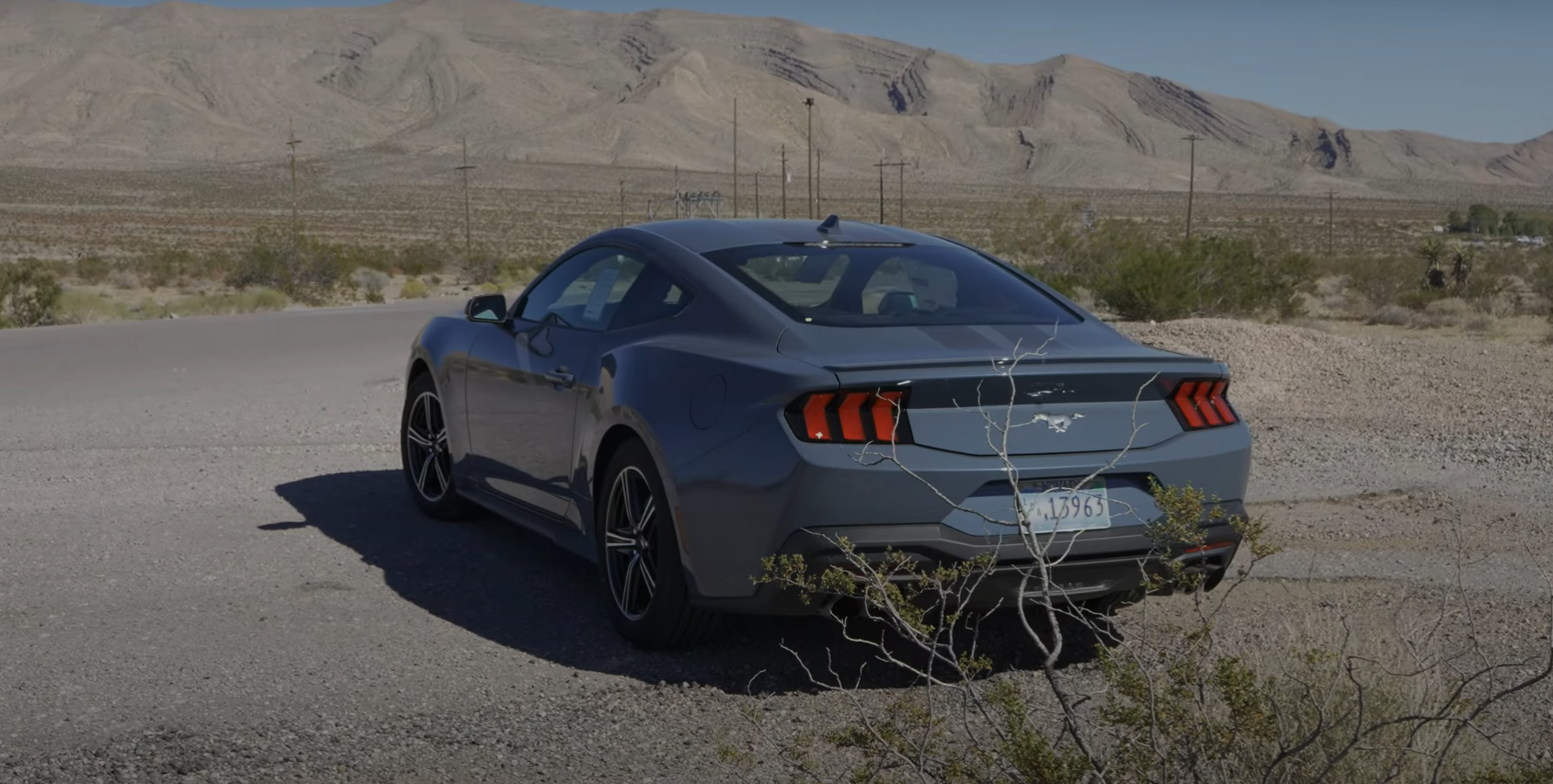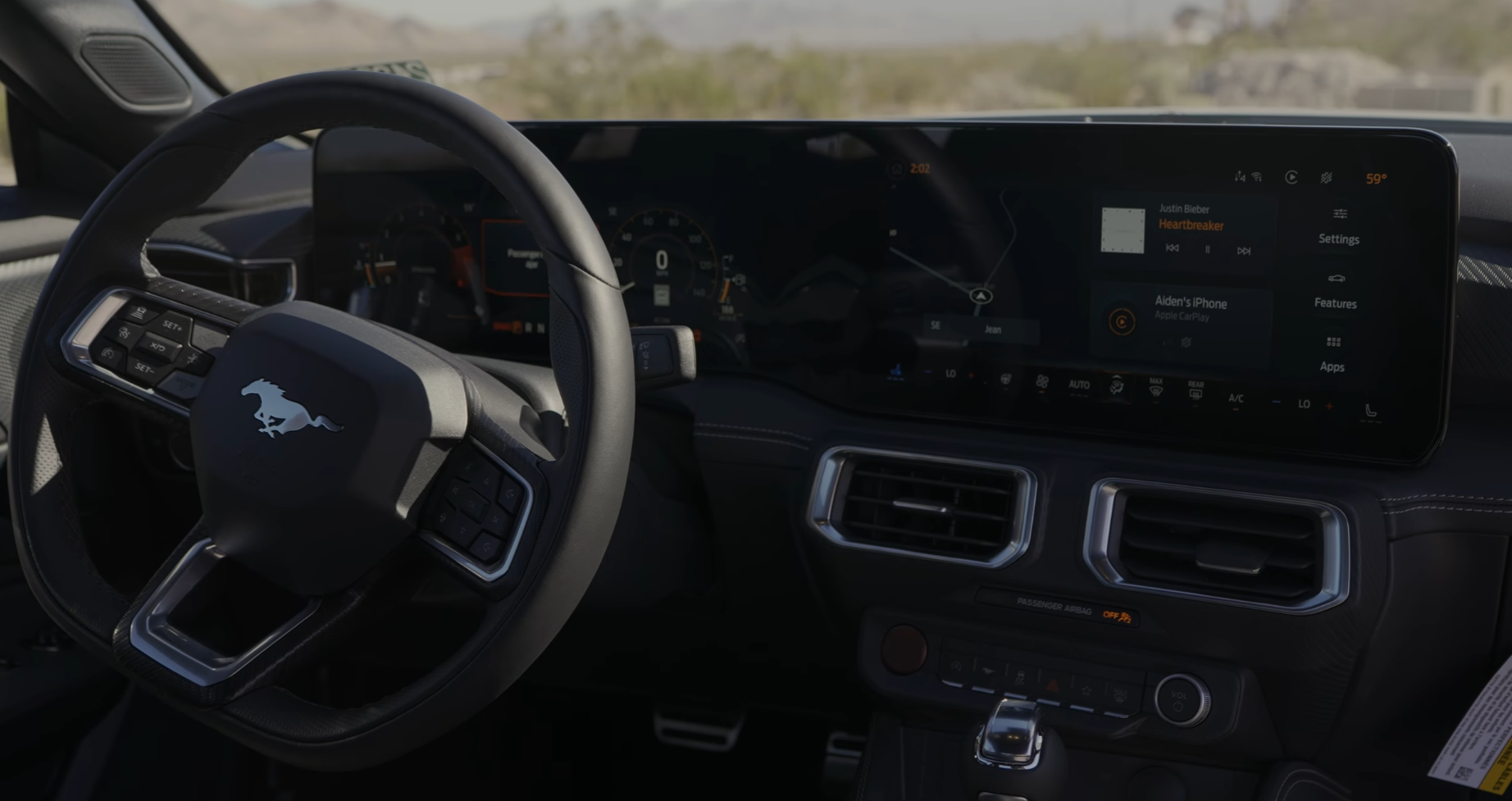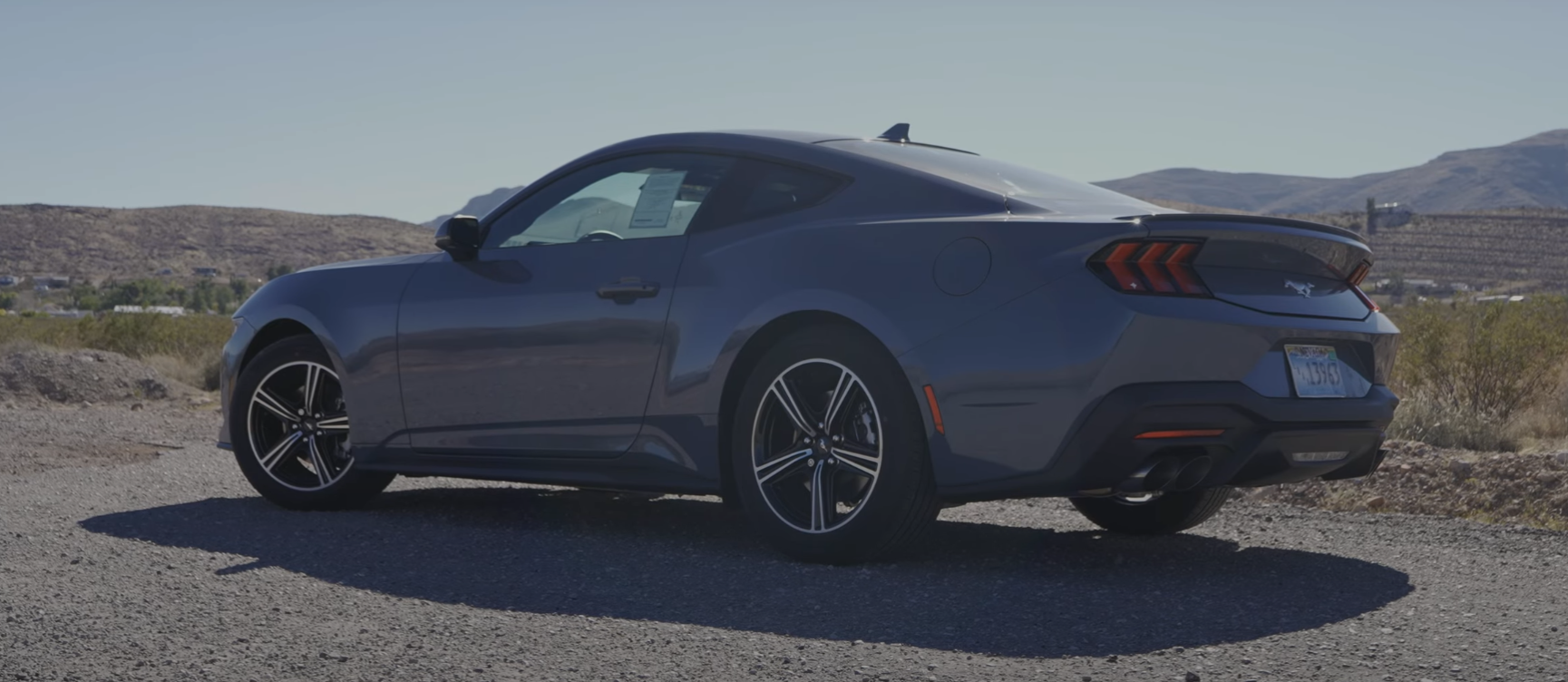Many people think the Mustang EcoBoost is not as good as the Mustang GT, but there are some good reasons to take a closer look at it. Even though the EcoBoost has less power than the GT, it still uses the same strong frame and steering system, so it feels like a real Mustang when you drive it. The EcoBoost gets better gas mileage, making it more affordable for everyday use, and comes with a lower starting price compared to the GT.
The updated EcoBoost engine now feels smoother and stronger, especially at lower speeds. It turns heads with its sleek design and looks very similar to the GT, with only small changes on the outside. For those who want to personalize their cars, there are plenty of aftermarket upgrades available. The EcoBoost keeps the Mustang spirit alive while being more budget-friendly.
Key Takeaways
- Mustang EcoBoost and GT share many features but differ in power and price.
- EcoBoost offers better fuel efficiency and is less costly to own.
- Styling and aftermarket options make the EcoBoost an appealing choice.
Comparing Mustang EcoBoost and Mustang GT
Body and Steering Experience
Both the Mustang EcoBoost and Mustang GT sit on the same platform. They share the same steering setup, so the feel when you turn the wheel is very close in both cars. The way the EcoBoost drives is still like a real pony car, and the steering has improved from what it used to be. It feels good, especially in track mode and on curvy roads. In tight turns, there can be a little oversteer, making it fun for those who like to feel the back end move.
Power and Everyday Performance
| Model | Horsepower | Torque | Fuel Economy (MPG, Combined) | Starting Price |
|---|---|---|---|---|
| EcoBoost | 315 | 350 lb-ft | 26 | ~$32,000 |
| GT | 480 | — | 15–17 | ~$42,000+ |
The EcoBoost engine has five more horsepower than before, now reaching 315 hp. The GT is much more powerful, offering 480 hp, which is a big jump. The turbo EcoBoost keeps its punch throughout the RPM range, and the new tuning helps the automatic transmission shift smoother than before.
One of the main differences is gas mileage. The EcoBoost gets about 26 miles per gallon, while the GT usually gets around 15 to 17 mpg. The EcoBoost is also a cheaper car to buy and own. The price difference for similar trims can be more than $10,000. While the GT has more power, the EcoBoost still feels quick, handles well, and keeps costs down for the driver.
Power and Gearbox
Turbo Engine Features
The EcoBoost Mustang uses a four-cylinder turbo engine that now makes 315 horsepower and 350 lb-ft of torque. This is 5 horsepower more than before. Even though it can’t match the V8 in the GT, the turbo engine gives strong power at low speeds and does not lose much at higher speeds. Drivers have noticed that the power delivery feels quick and steady.
| Engine Type | Horsepower | Torque |
|---|---|---|
| Turbo I4 | 315 hp | 350 lb-ft |
Better Automatic Shifting
The automatic gearbox in this model works much smoother than older versions. Ford fixed problems like the hard shift between second and third gear, which used to make driving uncomfortable. Now, the shifts feel more natural and the car responds better when changing gears. This makes everyday driving and spirited driving both easier.
Choice of Drive Settings and Cornering
The car offers different drive settings, including a track mode. When using track mode, the steering feels tighter and the car handles better. Even though this is not a performance pack or a full track car, the EcoBoost corners well, especially on twisty roads. Drivers get a bit of oversteer when pushing hard in the corners, making it more fun to drive for those who enjoy a sporty feel.
Fuel Efficiency and Operating Expenses
Gas Performance
The Mustang EcoBoost stands out for its fuel economy. Owners can expect about 26 miles per gallon combined, with 33 mpg on the highway and 22 mpg in the city. This is a big difference compared to the Mustang GT, which usually gets only 15-17 mpg. For those who drive a lot, these numbers can mean big savings at the gas station.
| Model | City MPG | Highway MPG | Combined MPG |
|---|---|---|---|
| EcoBoost | 22 | 33 | 26 |
| Mustang GT | 15-17 | — | ~15-17 |
Total Cost to Own
The EcoBoost is more affordable to buy and to own. The sticker price for a new EcoBoost starts at about $32,000, with higher trims around $36,000 to $42,000. In comparison, a similar GT starts near $52,000 and can cost much more with extra features. This big price gap also means lower monthly payments.
Other ongoing costs, like fuel, are lower because the EcoBoost uses less gas. This adds up to savings over time. Here are some key differences:
- EcoBoost models cost about $10,000 less than GTs
- Lower fuel costs because of better mileage
- Mustang prices in general have gone up, but the EcoBoost stays more affordable
Insurance Facts
Insurance for the EcoBoost is often the same as for the GT because both are Mustangs. Even though the EcoBoost is the less expensive option and comes with a smaller engine, insurers usually see all Mustangs as sports cars.
- Insurance rates are usually not much lower for the EcoBoost
- Driving record and other factors can matter more to insurance costs
- Choosing the EcoBoost mainly saves money on fuel and purchase price, not insurance
Cost and Worth
Sticker Price Breakdown
The Mustang EcoBoost offers a lower starting price compared to the Mustang GT. Here is a simple table showing the main prices:
| Model | Starting Price | Higher Trim Price | Top Level Price |
|---|---|---|---|
| EcoBoost | $32,000 | $36,000 (Premium) | $42,000 (well-optioned) |
| Mustang GT | Higher than EcoBoost by $10,000 or more | $52,000 (well-optioned) | Up to $70,000 (Dark Horse Premium) |
The price gap between the EcoBoost and the GT is around $10,000 or even more, depending on the extras you pick. This means the EcoBoost is a more affordable way to own a Mustang.
Different Package Choices
Buyers can pick from a few main trim levels for the EcoBoost line:
- EcoBoost Standard: The lowest price, with all the basics covered.
- EcoBoost Premium: Costs more, but adds comfort and better tech.
- Convertible Options: Popular for those who like open-air driving.
The Mustang GT has higher trim levels and bigger price tags, but both cars look very similar from the outside except for a few design details like the front end and some badging. The shared chassis and features mean EcoBoost buyers do not miss out much on style or comfort, even though they pay less.
Looks and Main Highlights
Outside Appearance
The newest EcoBoost keeps a sharp and modern style. Its front end stands out with bold “fangs,” and there are small details that make it different from the GT. The body shape is low and wide, and even the base EcoBoost keeps the famous Mustang profile. The tires and badges are a bit different from other models, but overall, it still looks like a classic sports car. The convertible version is a favorite for people wanting a fun ride.
Main Visual Features:
- Aggressive front design with unique details
- Slight changes from GT in wheels and badges
- Available as coupe and convertible
- Stays true to Mustang’s shape
Mustang Character
The EcoBoost shares its basic frame and steering with the Mustang GT, so it still feels like a real Mustang. It might not have the loud V8 or as much power, but it gives good performance, especially with its turbo engine. Despite being the less powerful version, it doesn’t lose what makes a Mustang feel special. The low cost means more people can call themselves Mustang owners, and there’s a strong community and a lot of upgrades available.
Key Mustang Qualities:
- Uses the same chassis and steering as the GT
- Keeps the classic muscle car vibe
- Good handling and sporty design
- Offers a special feeling for new and long-time fans
| Version | Horsepower | Main Differences | Starting Price |
|---|---|---|---|
| EcoBoost Standard | 315 | Smaller wheels, less power, unique styling | Around $32,000 |
| EcoBoost Premium | 315 | More features, luxury options | Around $36,000 |
| GT | 480 | V8 engine, more power, bigger price tag | Around $52,000 |
Room to Upgrade
The Mustang EcoBoost stands out for its wide range of upgrades available after purchase. Many owners find that there are plenty of aftermarket parts and options to boost both performance and style.
Some common modifications include:
- Performance chips and engine tunes
- Larger turbochargers and intercoolers
- Upgraded exhaust systems
- Suspension kits for better handling
Drivers who want to get more power or a custom look have a solid foundation to start with. The shared chassis between the EcoBoost and the GT models means many parts are interchangeable. This makes it easier to find parts that fit and work well.
Aftermarket Mods: Quick Overview
| Category | Popular Options |
|---|---|
| Engine | Tunes, turbo upgrades |
| Exhaust | Cat-back, axle-back systems |
| Suspension | Lowering springs, coilovers |
| Appearance | Body kits, custom wheels |
These upgrades can help close the performance gap between the EcoBoost and the GT. Owners like having the chance to build a car that suits their style and driving needs. There is a large community and lots of resources for those who want to personalize their Mustang EcoBoost.
What I’ve Learned From Driving the EcoBoost Mustang
Driving Experience
- The EcoBoost has 315 horsepower and 350 pound-feet of torque.
- The turbo engine gives strong power, especially at low speeds.
- Ford has fixed old issues with the automatic transmission. It now shifts smoothly.
- The car handles well, even on curvy roads. Track mode makes it fun, giving just a bit of oversteer.
Cost and Value
| Model | Starting Price | Average MPG (Combined) |
|---|---|---|
| EcoBoost | $32,000 | 26 |
| EcoBoost Premium | $36,000 | 26 |
| EcoBoost (as tested) | $42,000 | 26 |
| Mustang GT | $52,000 | 15-17 |
- The EcoBoost saves a lot on gas compared to the GT.
- Payments are lower because the car costs about $10,000 less than the GT.
- Insurance costs stay about the same for both cars, but gas and purchase price make the EcoBoost cheaper to own.
Looks and Features
- Both the EcoBoost and GT share the same chassis and steering.
- The new front end makes the EcoBoost look sharp and modern.
- The differences between the EcoBoost and GT are mostly in small details like badges or tire size.
In summary, the EcoBoost offers a mix of strong performance, good looks, and lower costs, making it a solid choice for people who want a muscle car without spending a lot on gas or monthly payments.







